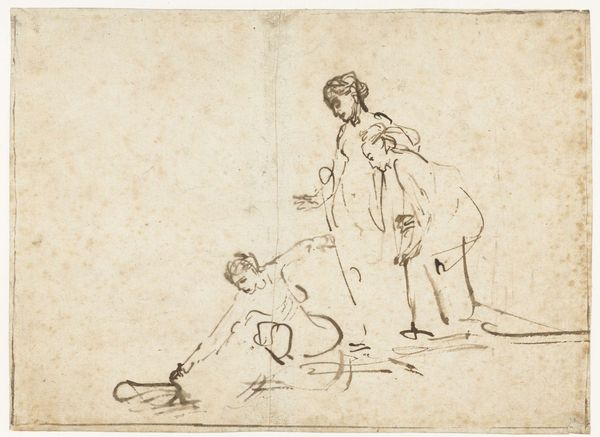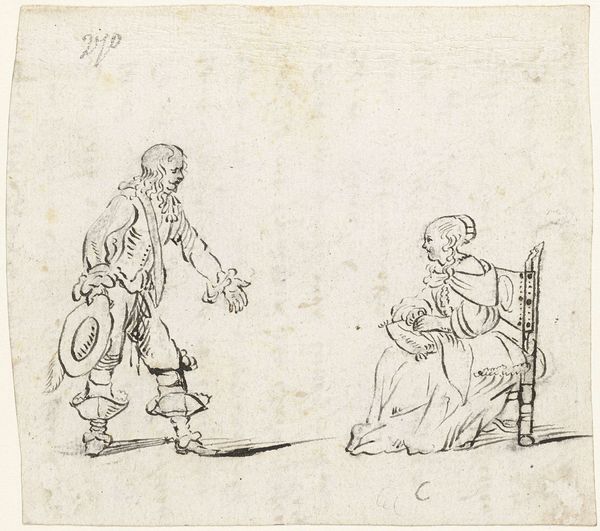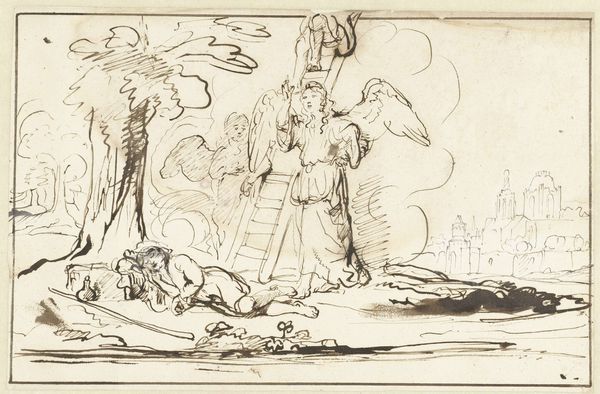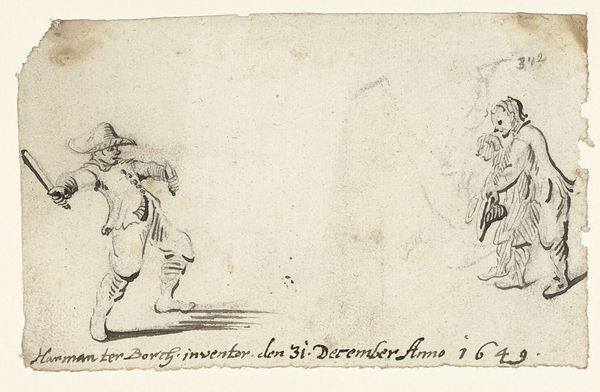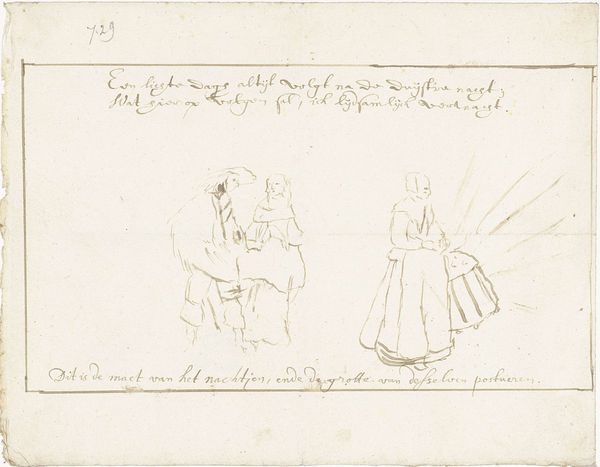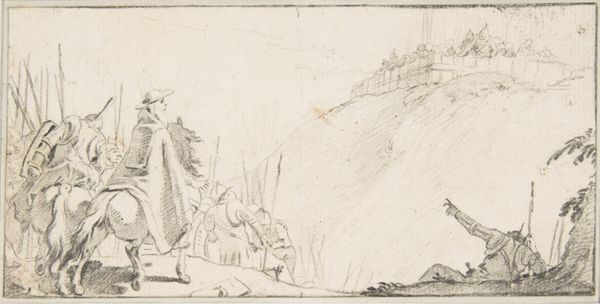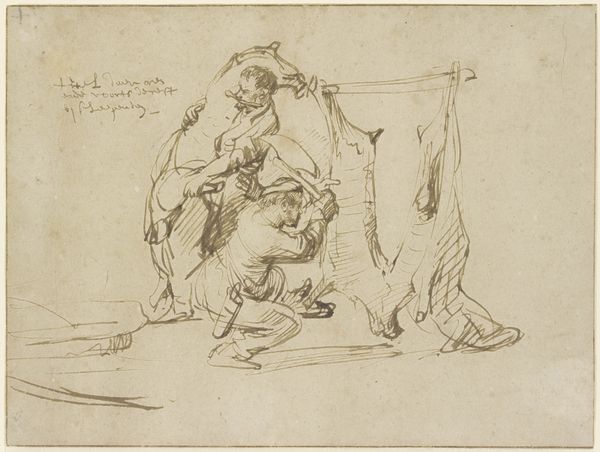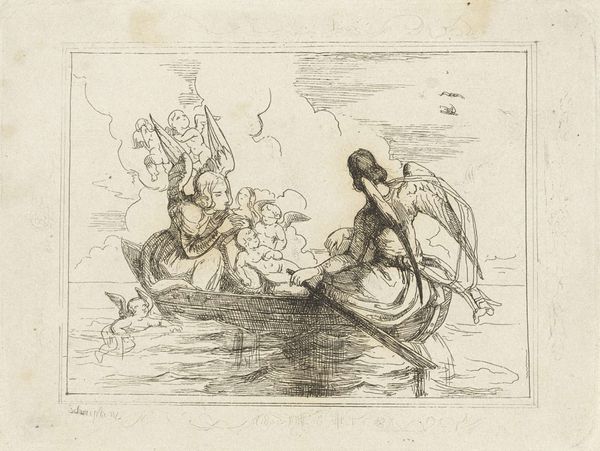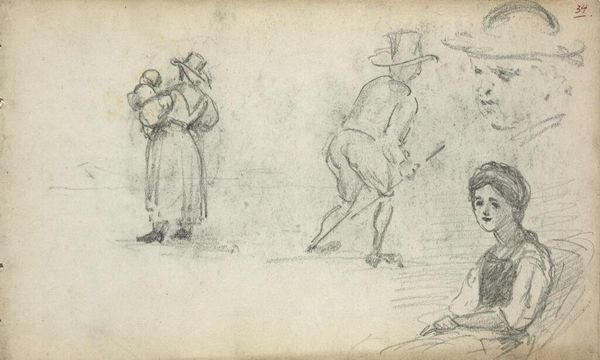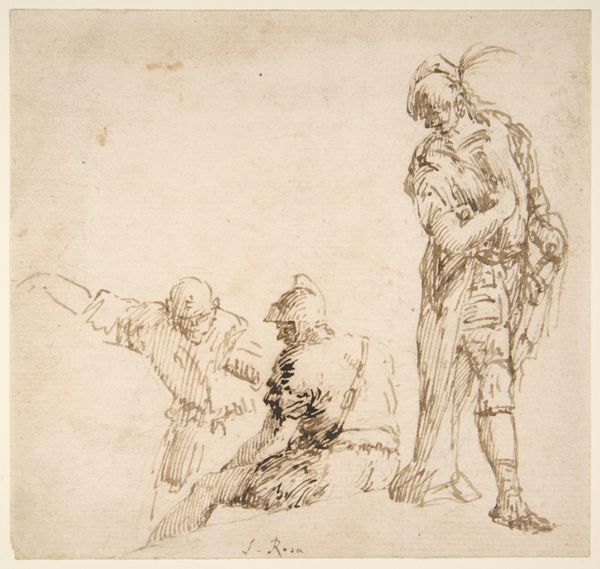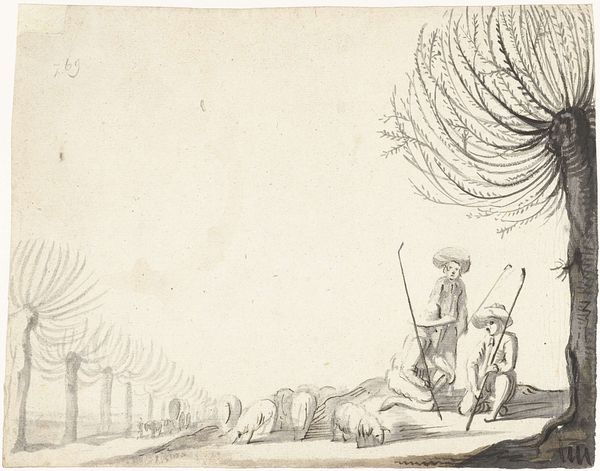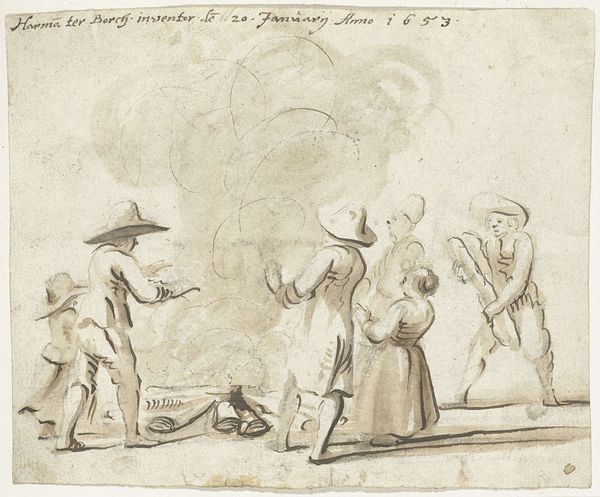
drawing, paper, pencil
#
drawing
#
baroque
#
pencil sketch
#
landscape
#
figuration
#
paper
#
pencil
#
genre-painting
Dimensions: height 139 mm, width 169 mm
Copyright: Rijks Museum: Open Domain
Curator: Welcome. We are looking at a pencil sketch, "Saint Augustine and the Child by the Sea," possibly from 1648, attributed to Harmen ter Borch, housed here at the Rijksmuseum. Editor: It feels sparse, almost whimsical. There's something immediate and unpolished about the lines that captures my attention, giving the impression it could be Saint Augustine happening upon the boy right this instant. Curator: Ter Borch was a master of genre painting, elevating everyday life to the level of history painting. This scene, while ostensibly religious, resonates within a specific historical and intellectual context. Consider the anxieties of the 17th century, the rise of scientific thought challenging traditional religious beliefs, even something as simple as playing near the beach. Editor: So, how does Ter Borch depict these tensions in the artwork itself? It looks, for the unaware, like just a kindly father trying to guide the somewhat lost son, based only on their body languages alone. Curator: Through scale and setting, primarily. Augustine, dressed in his elaborate religious gear, confronts a seemingly divine child. But the vastness of the sea behind them becomes a symbol. The infinite nature of God becomes something Saint Augustine feels helpless to grapple with. The story itself alludes to a confrontation between theological inquiry and spiritual mystery, mirrored, here, by this sense of intellectual vertigo. Editor: And do you think his personal biases informed his work at the time? Curator: Undoubtedly, considering the prevalent power structures and norms that would privilege male, and likely white, interpretations of events and truths during this era. Art in that period always carried an element of performing these dynamics in their own way, reflecting who has agency and who doesn't. It may not overtly seem this way at first glance here, but on closer analysis you can perceive them embedded in the art. Editor: The genius of a simple drawing like this rests, then, in its openness, allowing viewers to confront these multifaceted issues across centuries. Curator: Exactly, art becomes a historical marker of human values, always demanding continued study.
Comments
No comments
Be the first to comment and join the conversation on the ultimate creative platform.
